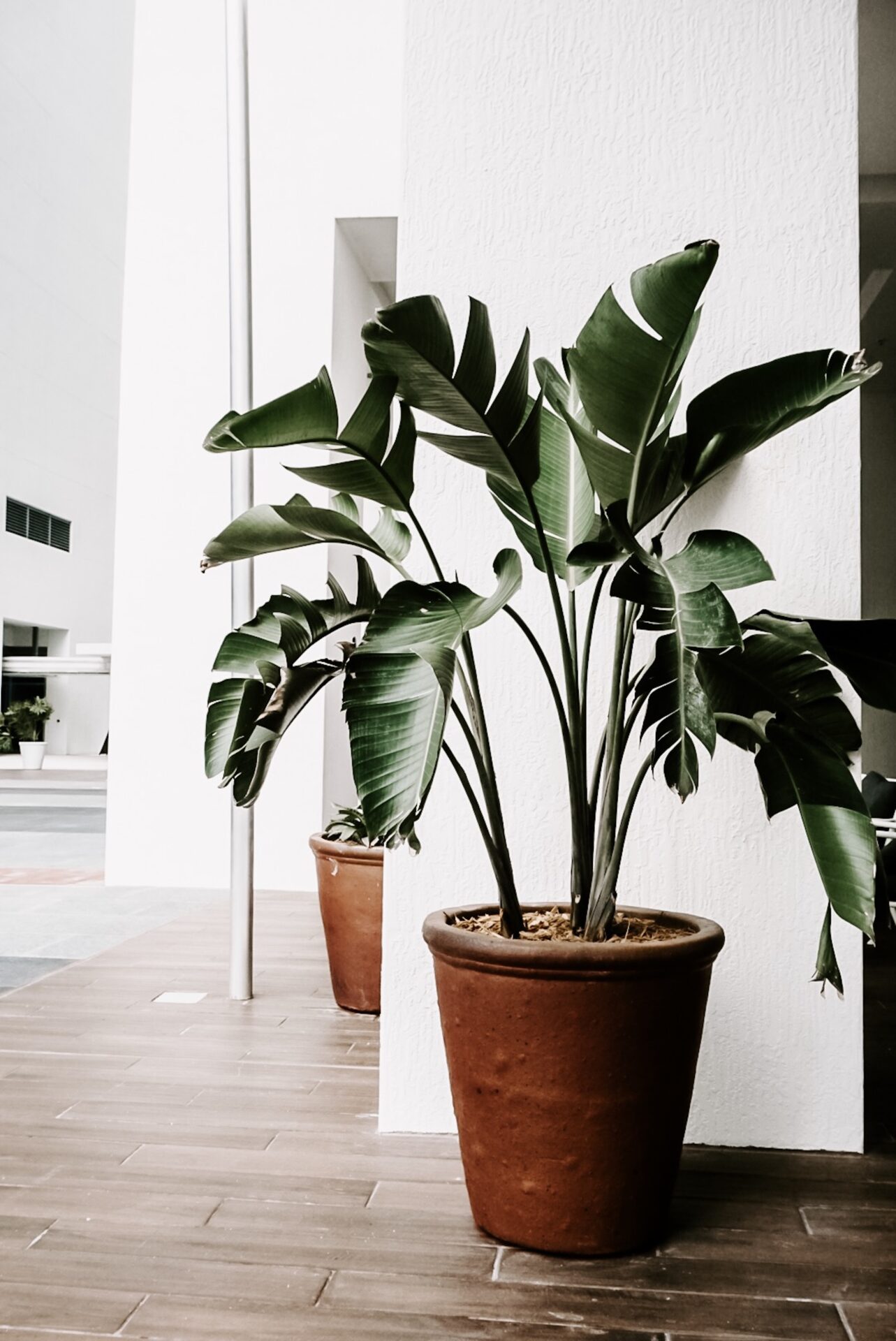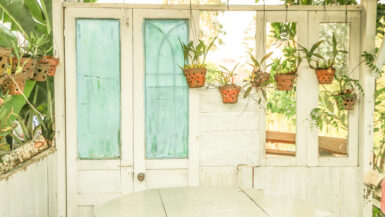Indoor vertical gardening has gained immense popularity recently, especially among urban dwellers seeking to cultivate fresh greens and improve indoor air quality. This article, “Health Boosting Indoor Vertical Gardens,” delves into the ingenious ways to incorporate this eco-friendly trend into your living space.
From selecting the perfect plants and designing custom structures to understanding the essential maintenance practices, our comprehensive guide will provide innovative tips and ideas to transform your home into a thriving green oasis. So, join us as we explore the fascinating world of indoor vertical gardens and unlock their numerous health and aesthetic benefits.
Essential Tips for Maintaining a Thriving Health Boosting Indoor Vertical Garden
A flourishing indoor vertical garden requires dedication and attention to detail. This section will explore crucial maintenance tips to help create a sustainable, healthy environment for your plants. From proper watering techniques to the right amount of light exposure, these essential practices will ensure your vertical garden thrives all year round.
1. Ensure Adequate Lighting for Your Plants
Light is essential for plant growth and development. Consider each plant species’ light requirements in your vertical garden and position them accordingly. Use natural light when possible by placing your garden near windows, or supplement with artificial lighting like LED grow lights for areas with limited sunlight.
2. Water Your Vertical Garden Correctly
Vertical gardens often require a different watering approach than traditional horizontal gardens. Depending on the type of irrigation system in place, such as drip irrigation or self-watering containers, ensure that the water reaches every plant evenly. Monitor the moisture levels in your garden and adjust your watering schedule as needed to avoid overwatering or underwatering.
3. Regularly Prune and Trim Your Plants
Pruning and trimming your plants maintains their appearance and encourages healthy growth. Remove dead or yellowing leaves and trim any overgrown branches to improve air circulation and prevent pests and diseases from spreading. This practice also helps maintain the structural integrity of your vertical garden.
4. Rotate Your Plants for Consistent Growth
Rotate your plants periodically to ensure they receive equal light and grow uniformly. This practice can help prevent any imbalances in growth and promote overall plant health. Rotating plants also allows you to inspect them closely and address any issues that may arise, such as pest infestations or nutrient deficiencies.
5. Fertilize Your Plants Regularly
Providing your plants with the necessary nutrients is crucial for their growth and health. Fertilize your indoor vertical garden regularly using organic or synthetic fertilizers, depending on your preference and the needs of your plants. Follow the recommended dosage and application guidelines to avoid over-fertilizing, which can lead to plant damage.
6. Manage Pests and Diseases Proactively
Indoor vertical gardens can still be susceptible to pests and diseases. Monitor your plants closely for any signs of infestations or infections and address them promptly. Employ organic pest control methods such as introducing beneficial insects or using neem oil to maintain a healthy and eco-friendly garden environment.
7. Prepare Your Garden for the Winter Season
For year-round success with your indoor vertical garden, it is essential to understand how to maintain it during the winter months. Check out our comprehensive guide on How to Grow a Thriving Indoor Vertical Garden in Winter for tips and strategies to keep your plants healthy during the colder season.
Following these essential maintenance tips ensures that your indoor vertical garden remains a thriving, vibrant addition to your living space. You will enjoy your garden’s visual appeal and reap the numerous health benefits of having fresh, oxygen-rich plants in your home.
DIY Health Boosting Indoor Vertical Garden Design Ideas and Inspiration
Creating a stunning and functional indoor vertical garden is easier than you may think. With simple materials and a touch of creativity, you can design a personalized green oasis that suits your style and space constraints. This section will explore inspiring DIY indoor vertical garden ideas catering to various skill levels and preferences. Let these innovative designs spark your imagination and guide you toward creating your unique, health-enhancing indoor vertical garden.
1. Repurposed Pallet Garden
One of the most popular and budget-friendly DIY vertical garden ideas is repurposing wooden pallets. A pallet can be transformed into a rustic, space-saving garden perfect for growing herbs, succulents, or small flowering plants with minimal modifications. Reinforce the slats, add a layer of landscape fabric, and fill the pallet with soil and your favorite plants. Mount the pallet on the wall or lean it against a surface for a charming, eco-friendly display.
2. Hanging Mason Jar Garden
Mason jars provide a versatile and attractive option for showcasing small plants. Attach hose clamps to a piece of wood or a sturdy frame and secure the jars. Fill each jar with potting mix and your choice of plants, such as herbs, ferns, or small succulents. This hanging mason jar garden adds a touch of greenery to your space and is a striking, decorative element.
3. Vertical Garden Wall Planters
Wall planters come in various shapes, sizes, and materials, offering endless possibilities for customization. The options are vast, from metal grids and cloth pockets to modular systems and wooden boxes. Arrange the planters on your wall in a pattern or design that suits your aesthetic, and fill them with complementary plants to create a visually appealing, living piece of art.
4. DIY Ladder Garden
An old ladder can serve as a functional and stylish base for your indoor vertical garden. With a few modifications, you can incorporate shelves or planters at varying heights, providing ample space for a diverse range of plants. Paint the ladder to match your interior decor, or leave it natural for a rustic, vintage-inspired look.
5. Suspended Plant Shelves
Suspended shelves offer a sleek, modern approach to vertical gardening. Install brackets or use the rope to hang wooden or glass shelves from the ceiling, creating a floating effect. Arrange a variety of plant species on the shelves to ensure an eye-catching display that adds depth and dimension to your space. This design is ideal for those looking to incorporate a contemporary touch into their indoor garden.
6. Indoor Trellis Garden
A trellis is a classic garden feature that translates beautifully to an indoor setting. Choose a simple wooden or metal trellis, or create a custom design that fits your space and style. Attach the trellis to a wall or use it as a room divider, and train climbing plants like ivy or pothos to grow up the structure. This indoor trellis garden offers your home a visually striking and dynamic green element.
These DIY indoor vertical garden ideas serve as a starting point to inspire your unique design. By exploring different materials, layouts, and plant species, you can create a personalized green haven that enhances your living space and contributes to a healthier, happier home.
Benefits of Health Boosting Indoor Vertical Gardens in Home Spaces
Indoor vertical gardens offer myriad benefits beyond simply adding aesthetic appeal to your living space. These innovative green installations have been proven to promote a healthier, more sustainable lifestyle while maximizing limited indoor areas.
This section will explore the advantages of incorporating an indoor vertical garden into your home, highlighting how these verdant additions can improve your well-being and transform your living environment.
1. Improved Indoor Air Quality and Humidity Levels
Plants are natural air purifiers, absorbing harmful pollutants and releasing fresh oxygen through photosynthesis. Cultivating a vertical garden in your home can significantly improve indoor air quality and reduce harmful toxins. Additionally, indoor plants can help regulate humidity levels, providing a more comfortable living environment, especially in dry climates.
2. Enhanced Mental Well-being and Stress Reduction
Research has shown that plants in indoor spaces can positively impact mental well-being, reducing stress and anxiety levels. The calming effect of an indoor vertical garden can create a tranquil, serene atmosphere, promoting relaxation and fostering a sense of connection with nature. This can be particularly beneficial for individuals living in urban environments with limited access to green spaces.
3. Space-Saving Solution for Urban Living
As urban populations grow, living spaces become increasingly smaller and more confined. Indoor vertical gardens provide an ingenious solution for incorporating greenery into tight spaces. By utilizing vertical surfaces, these gardens maximize available space and allow the cultivation of numerous plants, even in the smallest apartments.
4. Increased Productivity and Creativity
Studies have suggested that having plants in our surroundings can boost productivity and creativity. An indoor vertical garden can help stimulate the mind, enhance focus, and encourage innovative thinking. This makes vertical gardens an excellent addition to home offices, study areas, or any space where mental stimulation and concentration are essential.
5. Access to Fresh, Homegrown Produce
Indoor vertical gardens are not only limited to ornamental plants; they can also serve as a sustainable source of fresh herbs, vegetables, and fruits. Cultivating your produce in a vertical garden allows you to enjoy the benefits of homegrown, organic food, free from harmful chemicals and pesticides. This can contribute to a healthier diet and promote sustainable living practices.
6. Aesthetically Pleasing and Versatile Design Feature
Indoor vertical gardens bring nature into your home and serve as a visually stunning design feature. With countless styles and configurations available, these gardens can be tailored to suit any interior design aesthetic, from modern and minimalist to rustic and eclectic. The flexibility and adaptability of indoor vertical gardens make them a versatile and attractive addition to any living space.
As demonstrated throughout this section, indoor vertical gardens offer numerous benefits for a healthier and more sustainable lifestyle. By embracing this innovative gardening approach, you can transform your home into a verdant, revitalizing sanctuary that fosters improved well-being, environmental consciousness, and a stronger connection to nature.
Incorporating a Health Boosting Indoor Vertical Garden into Home Decor Styles
Health boosting indoor Vertical Gardens offer a unique opportunity to integrate greenery seamlessly into various home decor styles. Whether you prefer a minimalist, bohemian, or industrial aesthetic, there is a vertical garden design that will complement your space beautifully.
This subsection will explore creative ways to incorporate indoor vertical gardens into different home decor styles, providing inspiration and guidance for designing a harmonious, health-enhancing living space.
Minimalist and Modern Interiors
A sleek, minimalist vertical garden design is an excellent option for those who appreciate clean lines and simplicity. Opt for a streamlined wall-mounted planter system or suspended glass shelves with subtle, discreet hardware. Choose plants with a modern appeal, such as snake plants, philodendrons, or succulents, and arrange them in a geometric pattern or a monochromatic color scheme for added visual interest.
Bohemian and Eclectic Spaces
Patterns, textures, and vibrant colors characterize bohemian and eclectic decor styles. To incorporate a vertical garden into this aesthetic, consider using repurposed materials, such as a vintage ladder, a colorful pallet, or a collection of mismatched pots and planters. Embrace variety by mixing different plant species, including trailing plants, ferns, and flowering plants, to create a lush, visually engaging display that reflects your unique style.
Rustic and Farmhouse-Inspired Homes
Rustic and farmhouse-inspired home decor celebrates natural materials and a cozy, inviting atmosphere. To create a vertical garden that complements this style, consider using wooden crates, reclaimed wood, or antique metal containers as planters. Fill your vertical garden with fragrant herbs, such as rosemary, lavender, mint, and edible plants, like lettuce, strawberries, or cherry tomatoes, to evoke the charm of a country garden.
Industrial and Urban Lofts
Industrial and urban loft spaces often feature exposed brick, concrete, and metal elements. To incorporate an indoor vertical garden into this aesthetic, opt for a metal grid or wall-mounted pipe system as the base for your garden. Choose plants with bold architectural forms, such as fiddle leaf figs, rubber plants, or aloe vera, and consider using galvanized metal or concrete planters to create a cohesive, urban-inspired look.
Coastal and Beach-Inspired Interiors
Coastal and beach-inspired home decor evokes the serenity and beauty of the seaside. To create a vertical garden that complements this style, consider using driftwood, reclaimed wood, or white-washed planters as the base. Select plants that thrive in coastal environments, such as air plants, ferns, or bromeliads, and incorporate elements of sea glass, shells, or nautical rope for added coastal charm.
As this subsection demonstrates, indoor vertical gardens offer a versatile and adaptable design element that can be seamlessly integrated into various home decor styles. By considering the unique characteristics of your chosen aesthetic and selecting appropriate materials, plants, and design elements, you can create a personalized, visually stunning vertical garden that enhances your living space and promotes a healthier, more sustainable lifestyle.
Choosing the Best Plants for Your Health Boosting Indoor Vertical Garden
Selecting the right plants is crucial to creating a Health Boosting Indoor Vertical Garden that thrives and contributes positively to your living space. In this subsection, we will explore various factors to consider when choosing the best plants for your vertical garden and discuss some popular and adaptable plant species well-suited to this type of gardening.
By carefully selecting plants compatible with your indoor environment and personal preferences, you can create a visually appealing, health-enhancing vertical garden that flourishes in your home.
Factors to Consider When Selecting Plants
Before diving into specific plant species, it’s essential to understand the factors that impact your plant selection process. Keep these considerations in mind when choosing plants for your indoor vertical garden:
- Light Requirements: Assess the amount of natural light available in the area where your vertical garden will be placed. Choose plants suited to those light conditions, whether bright, indirect, or low.
- Humidity Levels: Indoor humidity levels can vary depending on factors such as heating and cooling systems or the presence of humidifiers. Select plants that can thrive in your home’s humidity levels.
- Maintenance Needs: Some plants require more care and attention than others. When selecting species for your vertical garden, consider your schedule and commitment to plant maintenance.
- Size and Growth Habits: Be mindful of each plant species’ mature size and growth habits, as these will impact your vertical garden’s overall design and structure. Opt for plants suitable for your garden’s scale and dimensions.
Popular Plants for Indoor Vertical Gardens
With the factors mentioned above in mind, let’s explore some popular and adaptable plant species that are well-suited for indoor vertical gardens. These plants offer aesthetic appeal and are known for their ability to flourish in various indoor conditions, making them excellent choices for your vertical garden project.
1. Pothos (Epipremnum aureum)
Pothos is a popular choice for indoor vertical gardens thanks to its low-maintenance nature and versatile growth habits. This trailing plant can be easily trained to grow upwards on a trellis or allowed to cascade down from a hanging planter. Pothos can tolerate low light conditions and is known for its air-purifying abilities.
2. Spider Plant (Chlorophytum comosum)
Spider plants are a classic choice for indoor gardens and are well-suited for vertical installations. Their arching leaves and cascading baby plantlets create visual interest and movement. Spider plants are adaptable to various light conditions and are effective at purifying indoor air.
3. Ferns (Various species)
Ferns offer a lush, green addition to any indoor vertical garden. Species such as the Boston or maidenhair fern thrive in indirect light and moderate humidity. Ferns are excellent for adding texture and depth to your vertical garden display.
4. Succulents (Various species)
Succulents, such as echeveria, sedum, or crassula, are well-suited for vertical gardens with ample light exposure. These low-maintenance plants come in various shapes, sizes, and colors, allowing for an eye-catching and diverse display. To keep your succulent vertical garden thriving, provide well-draining soil and avoid overwatering.
5. Herbs (Various species)
Herbs like basil, parsley, mint, and thyme are attractive additions to your indoor vertical garden and provide fresh, homegrown ingredients for your culinary creations. Most herbs require ample light and well-draining soil to thrive. Place your herb vertical garden near a sunny window for the best results.
By carefully considering factors such as light requirements, humidity levels, and maintenance needs, you can select the best plants for your indoor vertical garden. With the right plant choices and proper care, your vertical garden will become a stunning and health-enhancing focal point in your home, elevating your living environment and overall well-being.







Leave a reply